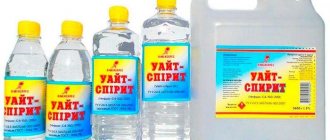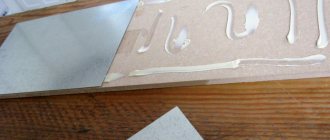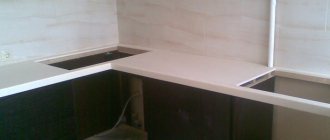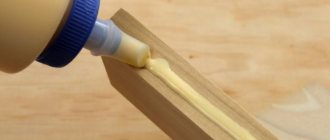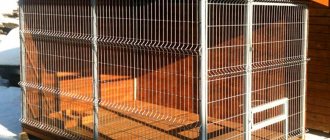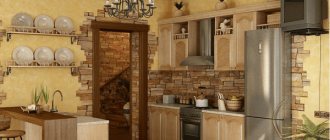During the construction or renovation of any building, a large amount of work falls on the share of sealing, sealing and moisture insulation of structural elements. For these purposes, special materials are used - sealants.
For indoor and outdoor work, it is advisable to use compounds with different sets of properties.
For indoor use, the composition must first of all be safe; the sealant for outdoor use must be frost-resistant and water-resistant.
What other requirements must sealants meet for outdoor use? What types of such sealants exist? What are their main pros and cons?
You will find answers to these questions below.
Adhesive sealant for seams white
CEMMIX Adhesive-sealant for seams is a one-component polyurethane sealant for sealing various seams, junctions of steps and walls, entry of pipes and ventilation systems and rigid-elastic gluing of various materials.
More details
Frost-resistant is a sealant that, during operation, can withstand sub-zero temperatures and a large number of freeze-thaw cycles while maintaining its characteristics.
Also important is the ability to store the sealant in a closed package in the cold and the ability to work with it in cold weather.
Polyurethane composition
Separately, we should consider another ideal composition for external work - polyurethane. It can be used not only to isolate cracks, but also as an adhesive material.
Features of polyurethane adhesive-sealant:
- Waterproof, its properties only improve upon contact with moisture.
- It has enhanced adhesion, which is important for external work.
- Does not emit toxic substances.
- Has a long service life.
- Hardens quickly.
- Elastic.
- Not afraid of ultraviolet rays.
The frost-resistant polyurethane composition adheres perfectly to plastic, concrete, metal, ceramics, and wood. It can be painted, is resistant to water, and interacts well with different types of paints.
Where are sealants used for exterior use?
Any building is a structure consisting of a large number of elements made from a variety of materials. All areas where these elements are adjacent to each other, without sealing, become sites of potential leaks and cold bridges to the interior.
Also, the structure may have different types of seams (for example, expansion joints), which need to be filled with elastic material.
In general, sealing is required:
- on the roof in places where the roofing material adjoins the chimney, walls, attic windows, in areas where utility lines pass, in places where roofing elements adjoin each other;
- on facades, if they are made of elements (panel houses, wooden houses made of timber or logs), on tile joints;
- along the perimeter of door and window frames.
Sealants are also widely used in repair work to fill seams, chips, and cracks.
Manufacturers rating
MAKROFLEX produces relatively inexpensive formulations with good antiseptic characteristics. Insulating mixtures work well inside and outside buildings and withstand temperature changes.
BELINKA compositions are suitable for ceramic materials, wood, plastic, and adhere well to glass. From the outside, they provide reliable isolation of the seam from water and blowing.
The Greek company TANGIT produces high-quality compounds with good characteristics that waterproof the joint from water penetration and prevent the development of harmful microorganisms. They use new technologies in production.
The well-known, trusted manufacturer CERESIT produces a wide range of sealants for various applications, including for facades. The products are of high quality, elasticity, resistance to ultraviolet radiation and stress.
How to choose frost-resistant sealant for external seams
The main classification of sealing materials is based on the active component, depending on the properties of which sealants demonstrate certain characteristics.
Acrylic sealants. Only for static connections
This type of sealant is valued for its environmental friendliness. Based on a water emulsion of acrylic polymers, acrylic sealants are dilutable with water, easy to apply, and cure when dry.
Acrylic sealants are resistant to ultraviolet rays, vapor permeable, and have good adhesion. They are usually available in a wide range of shades.
The disadvantages include the poor water resistance of this type of sealant. Modern industry takes this shortcoming into account; You can now find waterproof and frost-resistant acrylic sealants on sale, but they do not withstand constant exposure to high humidity and temperature changes very well; over time they begin to peel off.
The second important drawback is its suitability only for static seams, since acrylic sealant can withstand deformations of about 15%, or even lower.
Silicone sealants
Made from synthetic rubber and vulcanizing components, silicone sealants are either acidic (acetate) or neutral.
Acid varieties have restrictions on use: they cannot be used for interior work or for work on metal and plastic.
In general, these are well-proven materials for outdoor use:
- have good adhesion to different types of materials;
- cure when exposed to atmospheric moisture;
- waterproof;
- very elastic (stretch up to 250%), and elasticity is maintained during temperature changes and at low temperatures;
- can be applied at low temperatures;
- resistant to sunlight.
Thus, silicone sealants can be used for external work as frost-resistant and water-resistant materials.
But silicone sealant cannot be called a universal option, because it has features:
- Suitable only for seams of small width (up to 5 mm);
- incompatible with paints and varnishes;
- does not work well under compression, which can lead to the appearance of bubbles on moving seams;
- When used outdoors, it lasts no more than 5–7 years.
Therefore, silicone sealants are most often used for plumbing work, in wet rooms and for sealing double-glazed windows. Since they are often produced in transparent form, the question of choosing a shade is eliminated.
Bitumen sealants: indispensable for emergency repair of leaks
This type of sealant is made from modified bitumen polymers. The raw materials for them are by-products of oil refining, so in our country these are very popular and affordable materials. Due to their long-standing and widespread use, they are very well studied.
The main advantages of bitumen sealants are:
- availability;
- low cost;
- insolubility in water;
- excellent adhesion;
- ability to quickly polymerize;
- mechanical strength, reliability and durability;
- chemical inertness;
- versatility (used everywhere, from the roof to the foundation).
Older generations of bitumen sealants were unstable to high temperatures and solar radiation, destroyed foam and could only be black in color.
Modern bitumen sealants do not have these disadvantages. These are optimal materials, primarily for roofing work, as well as for sealing drainage and drainage systems, especially if quick repairs are required. Flat roofs are still manufactured with the mandatory use of bitumen sealants.
Tips and tricks
When working with frost-resistant sealant, use rubber gloves. If you have excess, you can remove it with an ordinary rag, and it is better to do this before the seam is completely polymerized. Old sealant can be removed with a sharp object: a stationery or construction knife.
It is not recommended to save on ingredients. Cheap sealants from little-known manufacturers, as a rule, either contain all kinds of additives, or do not have sufficient resistance to frost and atmospheric factors.
You can find products on sale not only from foreign, but also from Russian manufacturers. From a practical point of view, there is no difference between them, and the cost of imported products can be significantly higher. The main thing is to make sure that the sealant is frost and moisture resistant. If you encounter any difficulties, you can consult the seller.
Roofing bitumen sealant
CEMMIX Roofing bitumen sealant is a waterproof and waterproof roofing sealant based on bituminous elastomers for repairing roofing, gutters and roofing work.
More details
Cemmix produces waterproof roofing bitumen sealant for sealing joints and seams made of various materials.
Cemmix roofing bitumen sealant demonstrates the following characteristics:
- Frost resistance. Allows you to carry out work at temperatures down to minus 10° C. During operation, withstands temperatures of minus 35° C.
- Suitable for wet surfaces.
- Resistance to solar radiation and high temperatures up to plus 130° C.
- High adhesion to various materials.
- No reaction with foam.
- High elasticity.
- Waterproof and weatherproof.
- Fast polymerization, suitable for use in emergency repairs.
- Versatility. Can be used for interior work.
- Service life from 10 years.
Rubber sealants
Rubber and butyl rubber sealants are distinguished by their special thixotropic structure and high elasticity.
Synthetic rubber sealants are suitable for use in difficult weather conditions, on wet and oily surfaces.
They show characteristics such as:
- high adhesion and elasticity;
- compatibility with bituminous materials;
- resistance at temperatures from minus 50°С to plus 90°С;
- compatibility with paints and varnishes;
- high reliability (used at hydroelectric dams, in shipbuilding).
Important!
Rubber sealants can only be applied in positive temperatures.
Polyurethane sealants as the best option for reliable and durable frost-resistant sealant
On the sealant market, the most durable sealants are those based on hybrid MS polymers. These are one-component pastes that remain inert when sealed and are cured by exposure to moisture from the air.
The material formed during the polymerization process has constant high elasticity, mechanical strength, adhesion and compatibility with any type of material (including porous), chemical inertness, frost resistance, resistance to high temperatures and solar radiation, water resistance, safety, versatility, long service life.
Cemmix Weather Resistant Façade Sealant and Cemmix Joint Adhesive Sealer are typical members of the family of modern polyurethane sealants. They are intended for filling seams up to 20 mm wide, sealing seams and joints, and rigidly elastic gluing of elements made of various materials.
Scope of application
These funds are used to prepare the structure for the cold season. Although some of them can be used in humid environments, it is recommended to use them in dry weather to achieve excellent results.
Frost-resistant sealants are suitable for processing:
- residential apartment buildings,
- private low-rise cottages,
- shopping and business centers,
- warehouse premises,
- hangars,
- production workshops,
- communal facilities,
- engineering systems.
Most often they are used to seal interpanel seams and window openings, which helps prevent drafts. They are indispensable when carrying out roofing work or for waterproofing concrete structures. Given their good adhesion, frost-resistant sealants are suitable for buildings made of any materials.
With the help of these compounds, you can easily fill small voids, and the seam will help not only seal them, but also tighten the edges, preventing further deformation. These products are even used in the agricultural industry, as they help protect greenhouses from freezing during the cold season.
Adhesive sealant for seams white
CEMMIX Adhesive-sealant for seams is a one-component polyurethane sealant for sealing various seams, junctions of steps and walls, entry of pipes and ventilation systems and rigid-elastic gluing of various materials.
More details
Why Cemmix Facade Sealant (available in eight shades) and Cemmix Seam Adhesive Sealant (available in four shades) are the optimal choice of frost-resistant sealant for exterior use:
- easy application using a construction gun;
- high thixotropy, no bubbles, no spreading;
- fast initial curing, high polymerization rate;
- high adhesion even on wet surfaces (without primer);
- high elasticity, mechanical strength, elasticity under any operating conditions;
- chemical resistance;
- stability in conditions of high and low temperatures, temperature fluctuations, vibration;
- waterproof;
- antiseptic properties;
- possibility of coloring;
- service life 10–25 years;
- versatility (can be used for external and internal work).
The consumption of Cemmix facade sealant and Cemmix adhesive-sealant for seams with a seam width of 20 mm is 240 ml per linear meter.
Sealing tapes
Sealants in the form of tapes based on butyl rubber are easy to use and are successfully used even on such complex units as the junction of the roof with the chimney and others.
They have high adhesion, are durable, resistant to solar radiation, high and low temperatures. Retains constant elasticity and does not crack.
Sealing tapes are intended for outdoor use.
Consumption
Now let's talk about how much sealant is needed to carry out certain work. About 6 mm of product is required per meter of seam, but it must be taken into account that this is an average figure. Actual consumption depends on a number of factors:
- depth and width of the gap,
- type of building materials, etc.
If you have to seal a large gap, then in order to save money, it is recommended to use a special silicone cord. It is first placed into the cavity and then completely sealed with sealant.
If you need to process a small surface, for example, a window opening, one 300 g tube will be enough, but you also need to take into account the width of the gap between the frame and the wall.
Table of sealant consumption relative to the depth and width of the seam
Substrate requirements before applying sealant
Before applying the sealant, it is recommended to clean the base from dirt, remove dust, and dry it. Snow and ice, if any, are also removed. It is recommended to strengthen fragile surfaces with a primer.
The temperature at which sealant can be applied varies for different types of sealant.
Cemmix polyurethane sealants can be applied at subzero temperatures, as well as during light snow, rain, and fog.
It is necessary to exclude the appearance of a third contact surface of the sealant. To do this, a cord of a suitable diameter made of closed-cell polyethylene foam is installed at the mouth of the seam. It is important to apply polyurethane sealants so that the width of the seam is half its depth; this is necessary for high-quality polymerization.
Usually the sutures are not loaded on the first day. When polymerization ends, they become resistant to mechanical stress.
A sealant for external use, among other characteristics, must demonstrate water resistance and frost resistance during application and operation. The best option is Cemmix polyurethane sealants - reliable, durable, waterproof and frost-resistant. You can buy them wholesale, retail, and online.
You can buy CEMMIX products without leaving your home, with discounts from 5 to 33%!!!!
Buy on Ozon
Buy on Yandex.Market
Buy on Wildberries
Buy at Leroy Merlin
Acrylolatex sealing
Acrylic lathe mixtures are actively used for the purpose of insulation during street work. The structure includes elements that help acryplast withstand frost, humidity, and solar radiation.
After drying, the created seams acquire flexibility and density, which is a big plus when used for structures subject to deformation. After hardening, the surface can be painted.
When waterproofing, acrylic sealant is applied both to the cement and before the final coating. Before use, preparatory work is required: cleaning the surface, removing old cover, etc. Defects are unacceptable.
Acrylic waterproofing is not resistant to mechanical vibrations. If a load is provided, then the creation of an additional layer for tightening is required.
Description
Sealants for metal are viscous, paste-like or tape-based compositions based on polymers or oligomers. They form a sealing layer that is reliable, durable and durable. The substances adhere well to different materials, therefore they are used in various industries and construction, simultaneously performing several functions. Mixtures combine metal surfaces or metal with other materials and protect processed products from aggressive environmental influences.


